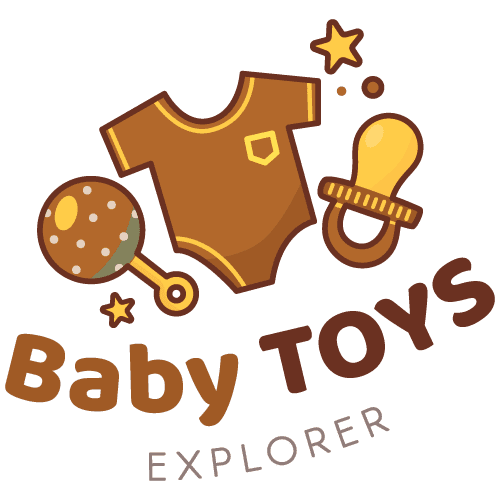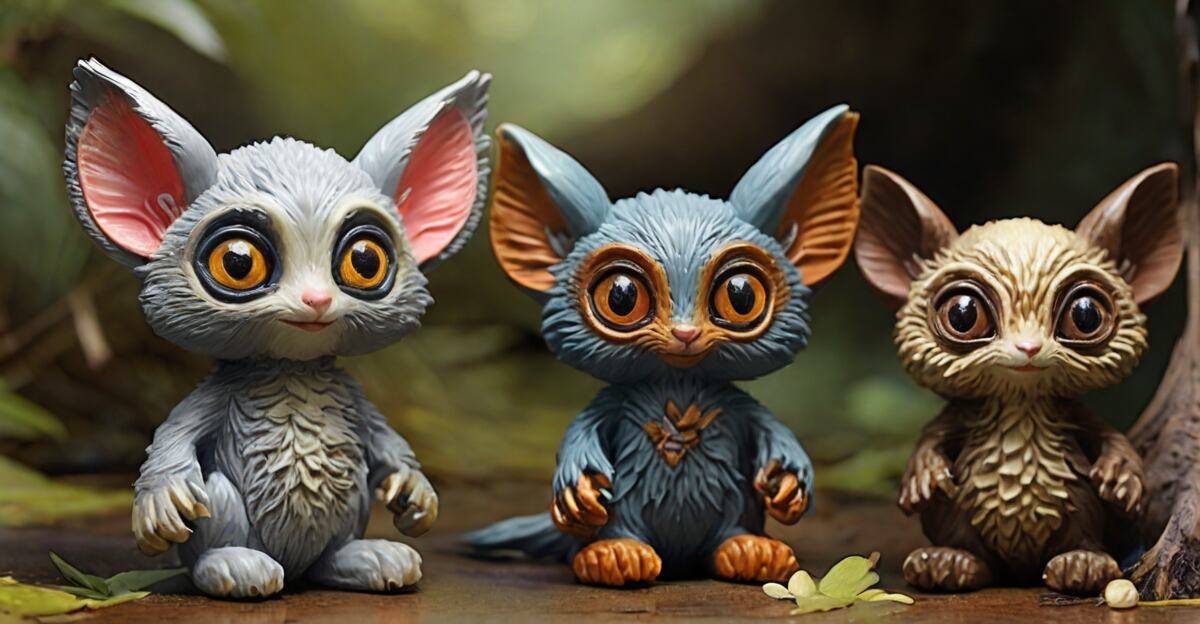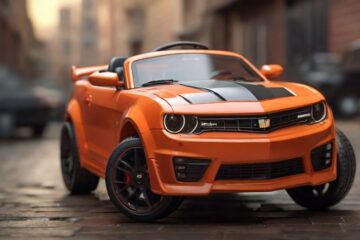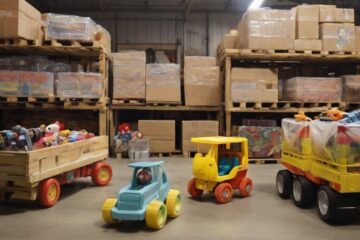The gaze of a bush baby with its giant eyes and twitching nose is absolutely enchanting. Children and adults are fascinated by a nocturnal primate called a galago. Making your own cuddly companion is the perfect way to celebrate their charm. A bush baby is a nocturnal creature with endearing features and an elusive nature. Many collectors and enthusiasts have enjoyed translating their charm into toys. You’ll learn how to make your own bush baby toy with this guide, complete with tips and techniques. Let your creativity run wild and recreate the African savanna.
History of Bush baby toy
In the mid-20th century, bush baby toys gained popularity because of their cute appearance. Kids and wildlife enthusiasts can connect with plush versions of exotic animals. Bush baby toys evolved over time, becoming more detailed, realistic, and diverse. In some toys, children and collectors could interact with the toys, adding to the excitement. Toys for bush babies have expanded from children’s playthings to decorative items for wildlife-themed interiors.
Varieties of Bush Baby Toys
You can find them for all ages and preferences:
Stuffed Bush Baby Toys:
In plush form, stuffed toys look like bush babies. You can get cuddly and huggable companions in a variety of sizes, designs, and materials.
Interactive and Electronic Bush Baby Toys:
Toys that simulate bush babies’ behavior are incorporated into these toys. Often, they feature interactive elements and sound effects mimicking bush baby calls.
Handcrafted and Artisanal Bush Baby Toys:
They’re handmade and crafted with attention to detail, often with unique features. Craftsmen or small-scale creators showcase their creativity and craftsmanship.
Comparison Between Varieties:
Bush baby toys come in different types with different advantages and disadvantages. Unlike interactive toys, stuffed toys offer cuddliness but lack interactivity. Compared to mass-produced toys, handmade toys stand out because of their uniqueness.
Suitability for Different Age Groups:
There are different kinds of these toys for different ages. Children of all ages love stuffed toys, but older kids may prefer interactive toys.
Trends in Bush Baby Toys:
Bush baby toys have evolved over time, adapting to changing consumer preferences. As market trends change, the design, materials, and functionalities change too.
Benefits of a Bush Baby Toy:
Sparkling Imaginations:
The toy’s long ears and large eyes inspire storytelling and adventures in the African savanna.
Along with their furry friend, they can act out scenes from documentaries.
Growing Minds:
Build cognitive skills like problem-solving, critical thinking, and creativity through imaginative play.
Create intricate stories for their cuddly buddy to exercise their brains.
Animal Explorers:
Through play and exploration, discover bush babies’ habitat, diet, and fascinating behaviors.
Get to know the wonders of nature and develop an appreciation for it.
Comfort and Company:
There are some children who find comfort and companionship in bush baby toys.
Anxiety and loneliness can be eased by the soft fur and cuddly body.
Beyond the Toy Box:
Learning opportunities can be sparked by bush baby toys.
It’s a great way to teach kids about animal biology, geography, and even conservation.
Making Bush Baby Toys
Before diving into the sewing, let’s assemble the tools and materials you’ll need:
Fabrics:
- Main Fabric: For the body, choose a soft, plush fabric in brown or gray. Faux fur, minky, and fleece are popular options.
- Accent Fabric: Contrasting colors and patterns make the ears, belly, and paws stand out. Felt or cotton are the best materials.
- Lining Fabric: Cotton or muslin fabric will provide structure and stability to your toy.
Embroidery Supplies:
- Eyes and mouth are black embroidery floss.
- Nose and inner ear floss in pink or brown.
Sewing Tools:
- Sewing machine (optional, hand sewing is also possible)
- Sharp fabric scissors
- Pins
- Needle and thread
- Fabric marker or chalk
- Stuffing:
- Instead of polyester fiberfill, use recycled stuffing or kapok.
- Additional Embellishments:
- Buttons or beads for eyes (optional)
- Small bells or rattles for inside the toy (optional)
Bringing Your Bush Baby to Life:
Creating the Template:
- Online patterns are available or you can draw your own. Try to make it simple with rounded edges. When scaling the pattern, think about how big you want your toy to be.
- Make templates for cutting the fabric from cardboard or cardstock.
Cutting the Fabric:
- Make sure you leave at least 1/2 inch between each edge of the pieces when cutting out the templates.
- For the ears, belly, and paws, cut one pair from the accent fabric, and one pair from the lining fabric.
Sewing the Pieces Together:
- Keeping the bottom edge open for turning and stuffing, sew along the seam allowance. Make sure the ears, belly, and paws are all the same.
- Put the lining pieces right sides together and leave a small opening at the bottom. The lining shouldn’t show through the seams when you sew around the edges.
- To avoid bulky seams, clip curves and corners.
Adding Details:
- Through the opening near the bottom, turn the body right side out. You can use a chopstick or blunt tool to gently push out the corners.
- Make sure the body is stuffed evenly and firmly. Overstuffing might make it stiff.
- For a professional finish, hand-sew or use a blind stitch.
Embellishing Your Creation:
- The eyes and mouth should be embroidered using black floss. If you want, you can put a pink or brown dot on the nose and inner ears.
- Affix the ears, belly, and paws to their designated locations.
- Before closing the bottom opening completely, you can add small bells for rattles inside the toy.
The Finishing Touches:
- Instead of embroidering, you can attach buttons or beads.
- Your bush baby deserves a name and a personality!
Tips and Techniques:
- Once the ears, belly, and paws have been attached to the body, topstitch around the edges.
- To prevent snags, use a special minky needle.
- You don’t have to be boring! Make your bush baby your own by adding stripes, spots, or even a tail.
FAQ
Are bush baby toys suitable for all ages?
Bush baby toys are designed to be safe and suitable for a variety of ages. To make sure the toy is suitable, check the label.
How can I clean a stuffed bush baby toy?
You should wash your hands gently with mild soap. Follow the manufacturer’s instructions for care.
What are some unique features found in interactive bush baby toys?
Interactive toys might mimic bush baby calls, glow in the dark, or even include movement sensors.
Are there limited edition or rare bush baby toys available?
Some brands release limited edition these toys that appeal to collectors.
Can I find customizable bush baby toys?
Some artisans customize toys, so you can choose colors, accessories, or sizes.
Are there any ethical concerns related to purchasing bush baby toys?
Fair labor practices or the sourcing of materials can be ethical concerns. To minimize these concerns, choose toys made of sustainable materials.
Conclusion
Bush baby toys show the fascination bush babies evoke. Our homes are filled with cuddly companions and collectible pieces. It is an enchanting experience to explore the world of these toys, which offers a wide variety of choices and considerations. We hope this article has been helpful to you in understanding bush baby toys




